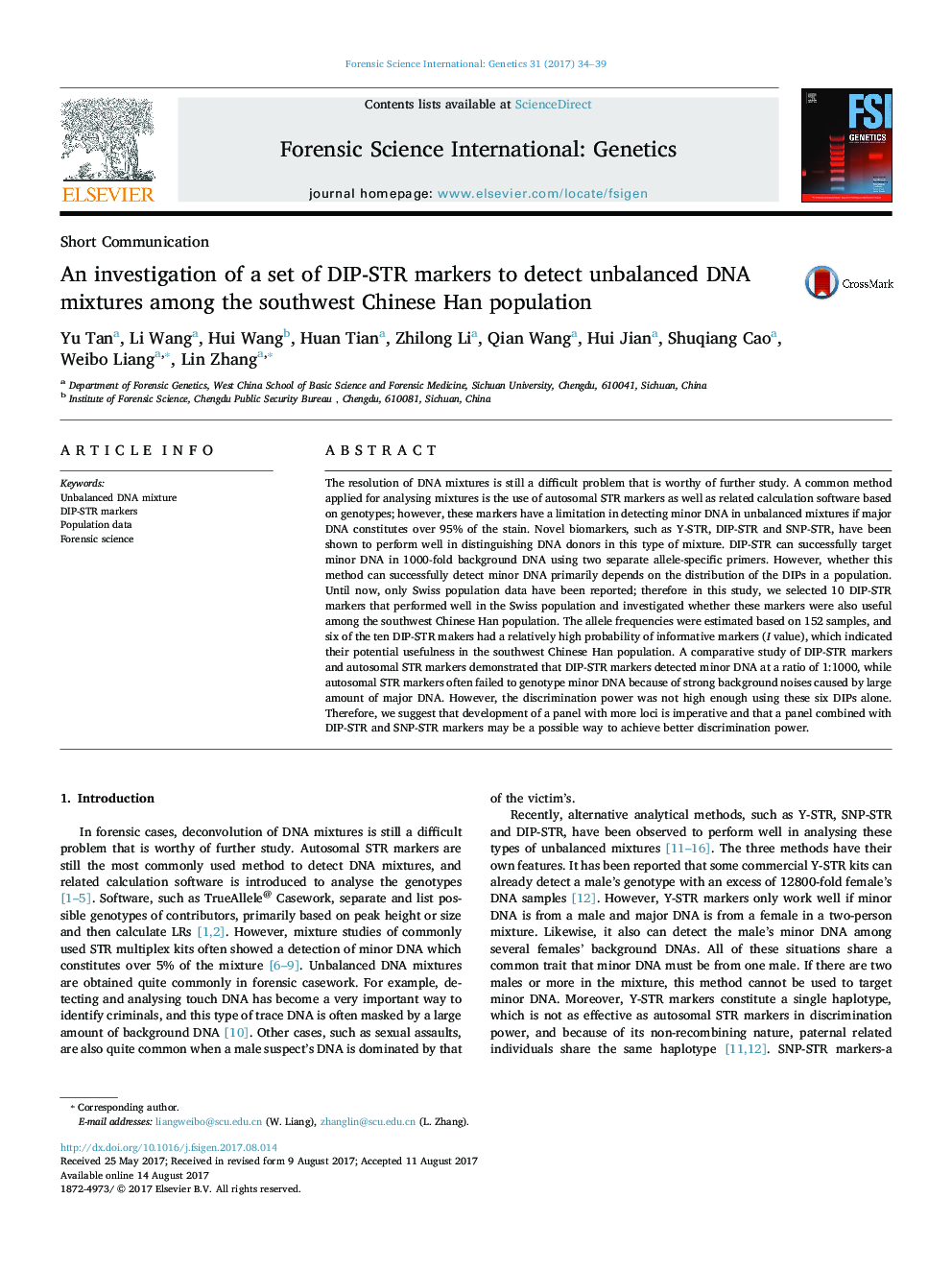| کد مقاله | کد نشریه | سال انتشار | مقاله انگلیسی | نسخه تمام متن |
|---|---|---|---|---|
| 6462676 | 1422147 | 2017 | 6 صفحه PDF | دانلود رایگان |

- Six DIP-STR markers perform well in Southwest Chinese Han population.
- DIP-STR markers outweigh autosomal STR markers in resolving unbalanced mixtures.
- Combining DIP-STR and SNP-STR markers might increase discrimination power.
The resolution of DNA mixtures is still a difficult problem that is worthy of further study. A common method applied for analysing mixtures is the use of autosomal STR markers as well as related calculation software based on genotypes; however, these markers have a limitation in detecting minor DNA in unbalanced mixtures if major DNA constitutes over 95% of the stain. Novel biomarkers, such as Y-STR, DIP-STR and SNP-STR, have been shown to perform well in distinguishing DNA donors in this type of mixture. DIP-STR can successfully target minor DNA in 1000-fold background DNA using two separate allele-specific primers. However, whether this method can successfully detect minor DNA primarily depends on the distribution of the DIPs in a population. Until now, only Swiss population data have been reported; therefore in this study, we selected 10 DIP-STR markers that performed well in the Swiss population and investigated whether these markers were also useful among the southwest Chinese Han population. The allele frequencies were estimated based on 152 samples, and six of the ten DIP-STR makers had a relatively high probability of informative markers (I value), which indicated their potential usefulness in the southwest Chinese Han population. A comparative study of DIP-STR markers and autosomal STR markers demonstrated that DIP-STR markers detected minor DNA at a ratio of 1:1000, while autosomal STR markers often failed to genotype minor DNA because of strong background noises caused by large amount of major DNA. However, the discrimination power was not high enough using these six DIPs alone. Therefore, we suggest that development of a panel with more loci is imperative and that a panel combined with DIP-STR and SNP-STR markers may be a possible way to achieve better discrimination power.
Journal: Forensic Science International: Genetics - Volume 31, November 2017, Pages 34-39